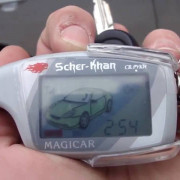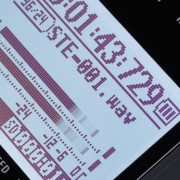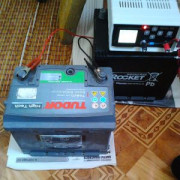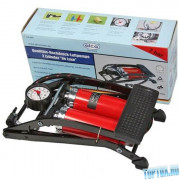Analog devices
Table of Contents:
Chapter 1: Introduction: circuit theory basics
Chapter 2: Operational Amplifier basics
Chapter 3: Op Amps — Non-ideal behavior
Chapter supplement: OP Amp Design Equation Summary
Chapter 4: Op Amp applications — Advanced topics
Chapter supplement: Using Op Amps as Comparators
Chapter 5: Solid-state diodes and diode circuits
Chapter 6: Diode rectifiers and voltage regulators
Chapter 7: Diode application Topics
Chapter supplement: Photodiodes and other Light Sensors
Chapter 8: Transistor basic concepts
Chapter supplement: Choosing Discrete Transistors
Chapter 9: Amplifier Stages
Chapter 10: Multi-stage amplifier configurations
Chapter 11: The Current Mirror
Chapter supplement: Current-Output Circuit Techniques Add Versatility to Your Analog Toolbox
Chapter 12: Differential Amplifiers
Chapter 13: Transimpedance Amplifiers
Chapter 14: Voltage References
Chapter 15: MOSFET Applications
Chapter 16: Amplifier advanced topics
Chapter 17: Power Management Circuits
Chapter 18: Data Converter circuits
Chapter 19: Digital to Analog Converters
Chapter 20: Analog to Digital Converters
Chapter 21: Digital electronics (part 1)
Chapter supplement: 4000 Series Logic and Analog Circuitry:
ADALM2000 Based Lab Activity Material Electronics I and IIADALM1000 Based Lab Activity Material Electronics I and II
Related supplemental Mini-Tutorials and eBooks
Ask the Applications Engineer: Op Amp Issues – Discusses different types of operational amplifier and the reasons for those differences.Analog Computation in the Digital Age
Index
Other sources
While Analog Devices is not responsible for nor can it guarantee the accuracy of the content in Wikipedia there might be value to the readers by providing links to topics related to the subjects covered in the above chapters as an Introduction to Electronics.
To that end, the following list is provided:
Wikipedia
-
Root Mean Square, Average electrical power
- Test Probe, Oscilloscope probes
- Ringing
- Pulse-width modulation
- Sample and hold
-
Passive
- linear elements
- Resistor
-
Capacitor
- Capacitor (component)
-
Passive
- nonlinear elements
- Diode
- Light-emitting diode (LED)
-
Active elements
-
Transistor
- Bipolar Junction Transistor- (BJT)
-
Field-Effect Transistor (FET)
-
MOSFET — Body Effect
-
JFET
-
MESFET
-
- Thermal runaway
- Darlington transistor (high current transistor configuration)
- Sziklai pair (high current transistor configuration, similar to Darlington pair)
- Operational amplifier
- Operational amplifier applications – Common Op Amp configurations.
- Comparator
- Vacuum tube (“valves”)
- Current source
-
-
Voltage regulator
-
Linear regulator
-
Zener diode
-
Low dropout (LDO) regulator
-
Bandgap voltage reference
- Brokaw bandgap reference – Another bandgap voltage reference topology.
-
- Switched-mode power supply (SMPS or “switching regulator”)
-
-
Oscillator-related
-
555 timer IC
-
Relaxation oscillator
-
Schmitt trigger
-
Multivibrator
- Latch (electronics)(like an SR latch)
-
Flip–flop
-
-
Electronic amplifier
-
Amplifier classes-
-
Class A
-
Class B and AB
-
Class C
-
Class D
- Amplifier circuit Schematic shows a differential amplifier with output tied to a common emitter amplifier that drives a class AB push–pull amplifier. In an example amplifier, we drive a similar push–pull output stage with a common collector (i.e., emitter follower) stage, and so our current amplifier will have no voltage gain.
-
-
Crossover distortion
-
Switching amplifier
-
Overdrive (music)
-
Linear range
-
Distortion
-
Harmonics
- Total harmonic distortion (THD)
-
Intermodulation
-
-
Clipping
-
-
Preamplifier
-
Tube amplifier
-
-
Passivity (engineering) – Passive filter
-
RLC circuit
-
-
Active (linear) filtering
-
Damping
-
Damping ratio
-
Q factor
-
Butterworth filter
-
Sallen–Key filter topology
-
Linear phase
-











